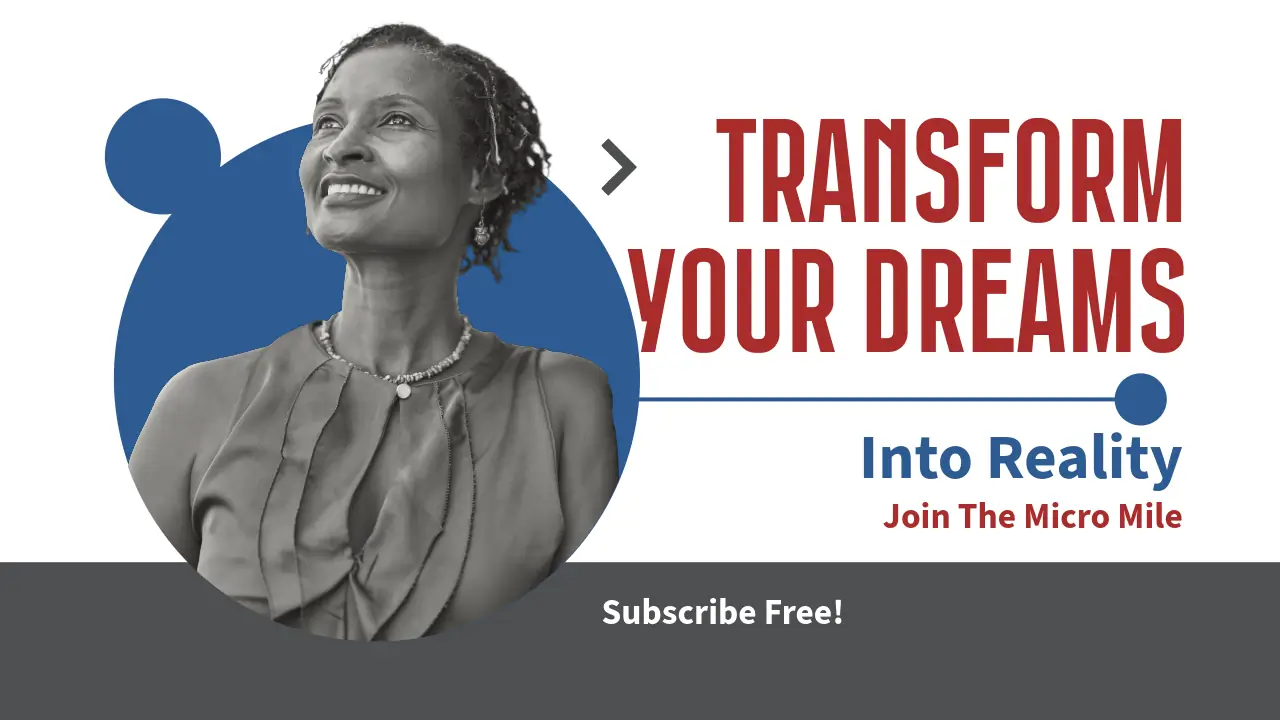- 1. Millennials
- 2. Gen Z
- 3. Baby Boomers
- 4. Tech Savvy Individuals
- 5. Health-Conscious Consumers
- 6. Eco-Friendly Shoppers
- 7. Luxury Seekers
- 8. Remote Workers
- 9. Parents
- 10. Students
In todayâs competitive landscape, identifying precise target audiences examples can significantly elevate your marketing efforts. Understanding various target groups allows marketers to tailor strategies that resonate specifically with their needs, preferences, and behaviors. Here are ten powerful examples that will surely boost your marketing initiatives.
1. Millennials
Understanding Their Characteristics
Millennials, also known as Generation Y, are individuals born between 1981 and 1996. They are digital natives, comfortable with technology and the internet. Their preferences lean heavily towards brands that prioritize authenticity and social responsibility.
In 2025, 31% of consumers in the U.S. fall within this demographic, making it crucial for brands to adapt their marketing strategies to appeal to them. Authentic storytelling in marketing campaigns is a powerful tool for engaging Millennials.
Marketing Strategies
To target this audience effectively, brands can leverage social media platforms such as Instagram and TikTok, utilizing influencer partnerships and interactive content that encourages engagement.
Additionally, loyalty programs and experiential marketing, such as live events or brand activations, can also resonate well with Millennials, creating memorable experiences that strengthen customer loyalty.
2. Gen Z
The Digital First Generation
Gen Z refers to those born from 1997 to 2012. As the first true digital natives, they have been surrounded by technology since birth, which shapes their consumption habits and brand expectations. In 2025, Gen Z makes up approximately 20% of the global population.
This generation values diversity, inclusivity, and mental health awareness, making it essential for brands to reflect these values in their messaging.
Effective Engagement Techniques
To connect with Gen Z, brands should focus on transparency and social consciousness. Utilizing short-form video content on platforms like TikTok can lead to higher engagement rates as they prefer video content over static images.
Additionally, implementing user-generated content campaigns can enhance brand loyalty, as this generation seeks validation from their peers rather than traditional advertising.
3. Baby Boomers
Understanding Their Needs
Baby Boomers, born between 1946 and 1964, hold significant financial power in 2025, and understanding their distinct characteristics is vital for effective marketing. They prefer direct communication, often leaning toward traditional media like television and print.
As this audience ages, their needs shift towards comfort, reliability, and service-centric experiences.
Crafting Targeted Messaging
To reach Baby Boomers, marketing messages should emphasize quality, safety, and meaningful customer service. Simple email marketing campaigns that offer value, such as helpful tips or discounts, can be particularly effective.
Additionally, maintaining an active presence on Facebook, as it’s the most used platform among this group, can help brands stay connected with their audience.
4. Tech Savvy Individuals
Defining the Audience
This audience encompasses people who are comfortable with technology and tend to adopt new tech solutions quickly. In 2025, technical proficiency is a critical skill across all age groups, making this a diverse demographic.
Marketing to tech-savvy individuals requires an understanding of the tools and platforms they use, such as mobile apps, software services, and online platforms.
Tactics for Engagement
Brands can leverage advanced marketing techniques like chatbots for customer engagement or personalized content through AI to appeal to this audience. Demonstrating innovative product features through tutorials or online demos can also help capture their attention and establish brand loyalty.
5. Health-Conscious Consumers
Identifying the Audience
Health-conscious consumers are increasingly prioritizing wellness in all aspects of their lives, from diet and exercise to mental well-being. This audience has grown significantly in recent years, with 85% of consumers affirming that health and wellness influence their purchasing decisions in 2025.
Brands targeting this group need to focus on organic, sustainable ingredients, as well as fitness-related products and services.
Effective Marketing Approaches
Marketing campaigns showcasing products’ health benefits or evidence-based research can effectively engage this demographic. Leveraging platforms like Pinterest and specialized health blogs can also increase visibility.
Offering free workshops or partnerships with local gyms can create a community around health and wellness, further enhancing brand loyalty among this audience.
6. Eco-Friendly Shoppers
Understanding Their Values
Eco-friendly shoppers prioritize sustainability and ethical consumption. Their purchasing decisions often revolve around minimizing environmental impact, making them a compelling audience for brands focused on sustainability.
By 2025, 70% of consumers state they would pay more for sustainably produced goods, showcasing the power of eco-conscious marketing.
Marketing Tactics
To appeal to this audience, brands can highlight sustainable practices and eco-friendly product features in their marketing strategies. Utilizing transparent sourcing information and sustainable packaging can resonate well with these consumers.
Engaging with this audience on social media through green initiatives or informational content about sustainability can foster loyalty and community support.
7. Luxury Seekers
Knowing Their Preferences
Luxury seekers are individuals who desire high-quality, exclusive products or experiences. This group encompasses high net worth individuals as well as those who prioritize premium items in certain categories. In 2025, luxury markets are projected to grow by over 10% due to this audience’s spending habits.
They appreciate personalized service and attention to detail in every interaction with a brand.
Reaching Out Effectively
Marketing strategies targeting luxury seekers should focus on exclusivity and personalized marketing efforts. High-end events or limited edition product releases can create buzz and drive engagement within this demographic.
Brands can utilize platforms like Instagram and LinkedIn to create aspirational content that reflects the luxury lifestyle.
8. Remote Workers
Identifying the Demographics
The remote workforce has grown exponentially in recent years, particularly after the pandemic. By 2025, nearly 30% of the global workforce is expected to work remotely. Understanding their unique work-life balance and needs is essential for effective marketing.
Remote workers prioritize flexibility, comfort, and productivity-enhancing products.
Marketing Strategies
To connect with remote workers, brands can market home office products, wellness programs, or tech solutions that improve productivity. Content marketing focusing on remote working tips can also establish thought leadership in this space.
Additionally, virtual events or webinars can engage remote workers comfortably, fostering community and brand loyalty.
9. Parents
Understanding the Audience Dynamics
Parents represent a considerable market, especially those with young children. By 2025, this demographic is expected to continue growing, with parents seeking products and services that simplify their lives.
This audience values reliability and efficiency in products and services that cater to their children’s needs.
Effective Communication Techniques
Brands can reach parents through social media channels like Facebook and Instagram, sharing parenting tips, product reviews, and testimonials. Offering value through educational content or resources can also build trust.
Partnerships with parenting influencers can enhance a brand’s credibility and enable wider reach within this audience.
10. Students
Recognizing Their Unique Needs
Students represent a diverse audience encompassing various ages and backgrounds, often characterized by limited budgets and a keen eye for value. As of 2025, students are also increasingly prioritizing mental health and wellness.
Understanding their motivations, such as seeking affordable solutions and experiences, is key in marketing to this group.
The Right Approach to Engagement
Brands can effectively reach students through promotional discounts, campus events, and social media engagement. Content that educates or entertains can lead to higher retention within this audience.
Collaborative initiatives with educational institutions can also create meaningful connections with students.
Conclusion
Each of these target audiences examples holds unique characteristics and preferences that can profoundly influence your marketing strategies. By understanding and tailoring your approach to these diverse groups, you’re not just selling a productâyou’re connecting with real people who value authenticity, quality, and engagement. With the landscape continuously evolving, leveraging these examples effectively in 2025 can set your marketing efforts apart from the competition.
Frequently Asked Questions
- What are target audiences examples?
- Target audiences examples include distinct groups such as Millennials, Gen Z, and health-conscious consumers, each requiring tailored marketing strategies.
- Why is it important to define target audiences?
- Defining target audiences helps marketers create personalized messages and campaigns that resonate, leading to higher engagement and conversion rates.
- How can I identify my target audience?
- You can identify your target audience through market research, customer surveys, and analyzing purchasing behaviors to gain insights into their preferences.
- What are some best practices for marketing to specific target audiences?
- Best practices include creating buyer personas, utilizing targeted advertising, and engaging through preferred communication channels unique to the audience.
- Can you provide more target audiences examples?
- Yes! Other examples include remote workers, eco-conscious shoppers, and luxury seekers, each requiring a unique marketing approach.


